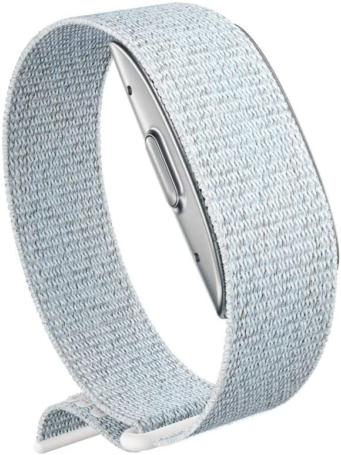
Amazon recently entered the wearable fitness device world, with Halo, a subscription-based screenless wrist band designed to help you improve your health and fitness. We’ll review the pros and cons of the Halo and give you a recommendation on whether it’s worth your hard-earned money.
Amazon Halo Design
The band itself is about the size of a Fitbit, and looked eerily similar to a WHOOP. It is completely screenless, and all interactions occur through the App which must be loaded onto your smart phone. It has a sensor on the bottom, critical for analyzing biometrics, and then also a microphone designed to analyze the tone of your voice for changes in stress and emotion.
Amazon Halo Features
“Activity”
The Halo app opens up to a screen with four major panels. The first panel is an analysis of your activity level across days, weeks, and months. For each time period, it tracks whether you have been sedentary, or active either at light, moderate, or high intensity. I actually found this feature to be pretty useful overall and fairly accurate. The one criticism would be that it's weekly “target goal” for activity is extremely low. One good walk and a few workouts and you can meet your first goal within 2 days. The good news is that it keeps giving you new goals to aim for after you complete the previous one.
One major issue for me was that the step count was FAR from accurate. On a day-to-day basis, it would over-estimate my steps by about 2000-3000. This is a pretty large error rate for someone getting 10K steps per day.
“Sleep”
This is another really nice feature of the app due to the variety of data that you’re given. The Halo breaks down your sleep into light, deep, and REM sleep, showing when each of those phases occurred. It also tells you how long you slept, how long it took you to fall asleep, and how much awake time you had. I do wish it gave you some additional data around HRV and waking HR, however.
“Tone”
The tone feature is based on a microphone that is analyzing the sound and...well, tone of your voice throughout the day. Your voice is run through a machine learning system telling you ultimately how stressed you are, whether your mood changed, etc. Reading up on this, experts are a bit dubious around the technology and I found this to be a real-life case as well. If I was talking to someone on the phone versus in person, Halo thought I was in a different mood when in reality I was probably just talking at a different volume.The nice thing is that you can easily turn this feature off which DRAMATICALLY extends the battery life of the product
“Body”
Last but not least is the body composition feature. Here is where I really had a falling out with the device. To describe the process, you strip down to basically your underwear and then place your phone about 6 feet away. It then proceeds to take four pictures of you from different angles/positions and calculate your supposed body fat percentage. I wondered whether or not the actual Halo device was used in the process, but the percentage is calculated exactly the same whether or not you wear the device or not, so I don’t think it is. As you can imagine, 4 pictures are NOT a great way to determine body fat levels.
Amazon Halo: Inducer of Body Dysmorphia


The other major issue is that the app does a terrible job of converting the pictures into a composite of your body. I generally feel as though I have pretty good body composition, but Halo’s images made me look like I had never worked out a day in my life. To be honest, I was a bit shook the first time I saw the composite that it took of me. My thoughts went something like:
“Is this really what I look like?”
“Maybe I should cut back on my food intake a little bit and train a bit more.”
“Wow, when did I let myself go like this? What happened?”
Keep in mind I am a trained nutrition coach and have helped hundreds of people to better deal with body dysmorphia issues. If anyone was going to be well prepared for this, it should have been me, but it STILL F#$#%-ed with my brain in a bad way.
The good news is that I calmed down a few minutes later once my “common sense” kicked in and I realized what was really going on. However, someone that was not quite so familiar with this field, or someone with pre-existing dysmorphia issues definitely could have been thrown for a real tail-spin.
Amazon Halo versus WHOOP
A natural comparison for the Halo is the WHOOP strap. They are both screenless bands, both integrate with smartphone Apps, and both provide data on sleep and total activity output. The Halo is a much simpler device. There are no HRV measurements for you to interpret as an example. Some people might like this, but for me, I like to see the raw data.The Halo strap also was consistently getting in the way of my workouts. Anything with kettlebells, gymnastics rings, or movements where I wanted touse my gymnastics grips to protect my hand was an issue. The band consistently would get in the way causing me to become distracted from what I was doing.
I only have owned the first-generation WHOOP, but I generally preferred it to the Halo. It was more streamlined, less distracting and I liked the data it provided versus Halo’s higher-level summary.
The best way to simplify it might be as follows. The WHOOP is for the serious fitness enthusiast or athlete, whereas the Halo is more for a person simply looking for a little motivation to increase their activity. To be honest, the body fat calculator was enough of a detractor for me that I could never recommend this product to anyone. I think the risks to a person’s mental health greatly outweigh the benefits to their physical health.




